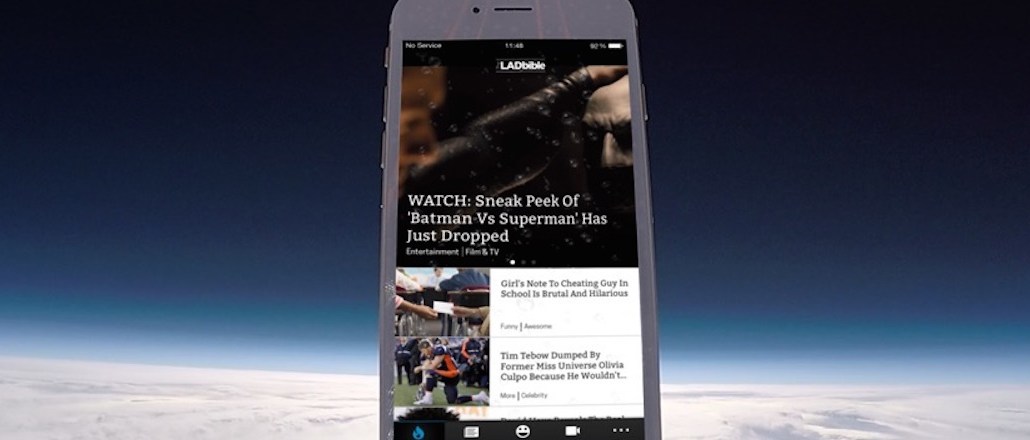Insights from CTV leaders at Dentsu, Horizon Media and more

The Lad Bible has been trying to shed its beer-and-blokes image by covering more serious news content, a strategy that has extended to its first app on iOS. We talked with James Wigley, The Lad Bible’s commercial director, about how the publisher creates content for individual platforms and why it takes a conservative approach to display ads.
Why launch your first app now?
Our audience is young, mostly male and 85 percent mobile, so all our business is aimed at serving that, whether it’s our own site, Facebook, Instagram, Twitter, Snapchat, Vine or YouTube. The app was the next logical step.
How are you monetizing it?
It’s a mix of display, branded content and video pre-roll. We take a patient approach to monetization. One of the most significant decisions I make is often about when not to monetize. For instance, if we serve you a piece of video content under 60 seconds, we aren’t going to serve a 30-second pre-roll ad ahead of it.
What else do you have in the works?
In the new year, we’ll be rolling out apps for The Sport Bible, and then we’ll look at our other brands and ramp up our user-generated content-licensing business, The Content Bible.
Our mobile focus is very much on video and branded content. Our video team is expanding quickly, and next year, we are going to power-up our original storytelling. We’ve had some good results on Snapchat and Instagram with original video content, which has given us a sense of what is possible.
So what’s done well for you?
We did an exclusive feature for David Hayes’ comeback that received 1.3 million views on Facebook in the first 24 hours. A pared-down version on Snapchat received 1.9 million in 24 hours. Usually, we see more views on Facebook, but this shows us that Snapchat is increasingly an important part of our mix.
https://www.youtube.com/watch?v=FIcruPI9NA4
What about branded content?
We did a “12 Hour Holiday” campaign with Doritos and OMD where they challenged our guys to have a holiday in Ibiza and be back to their desks by 9 in the morning. We created video for our website, streamed elements of the challenge on Periscope and Twitter, ran a short trailer on Instagram and used Snapchat for behind-the-scenes clips, which delivered a million Snapchat views in 24 hours. We obviously tailor content for where it’s going to sit: On Instagram, our video pieces are cinematographically beautiful; Snapchat is more raw and gets people closer to the story. Some media owners think of themselves as platform-agnostic, whereas we’re more platform-specific.
Young men are more likely to turn on ad blockers. How is this impacting you?
It’s not a massive issue for us. Ad blocking is a symptom of users who won’t stick around if you serve them a page with 100 different tags that eat up time and data. This is just the reality.
Images courtesy of The Lad Bible.
More in Media

Digiday+ Research: Publishers pull back their dependence on digital revenue
After a year in which publishers shifted their revenue dependence away from traditional channels and toward digital channels, 2025 has seen a shift back toward more of a balance between traditional and digital revenue sources.

LinkedIn makes it easier for creators to track performance across platforms
Creator data is becoming more accessible to third-party vendors via a new API — another step in LinkedIn’s creator platform evolution.

Ad Tech Briefing: The ‘plumbers’ posing as the unlikely saviors of the internet
After several false dawns, can Cloudflare’s ‘anti-AI scraping tool’ finally offer publishers a road to commercial redemption?





